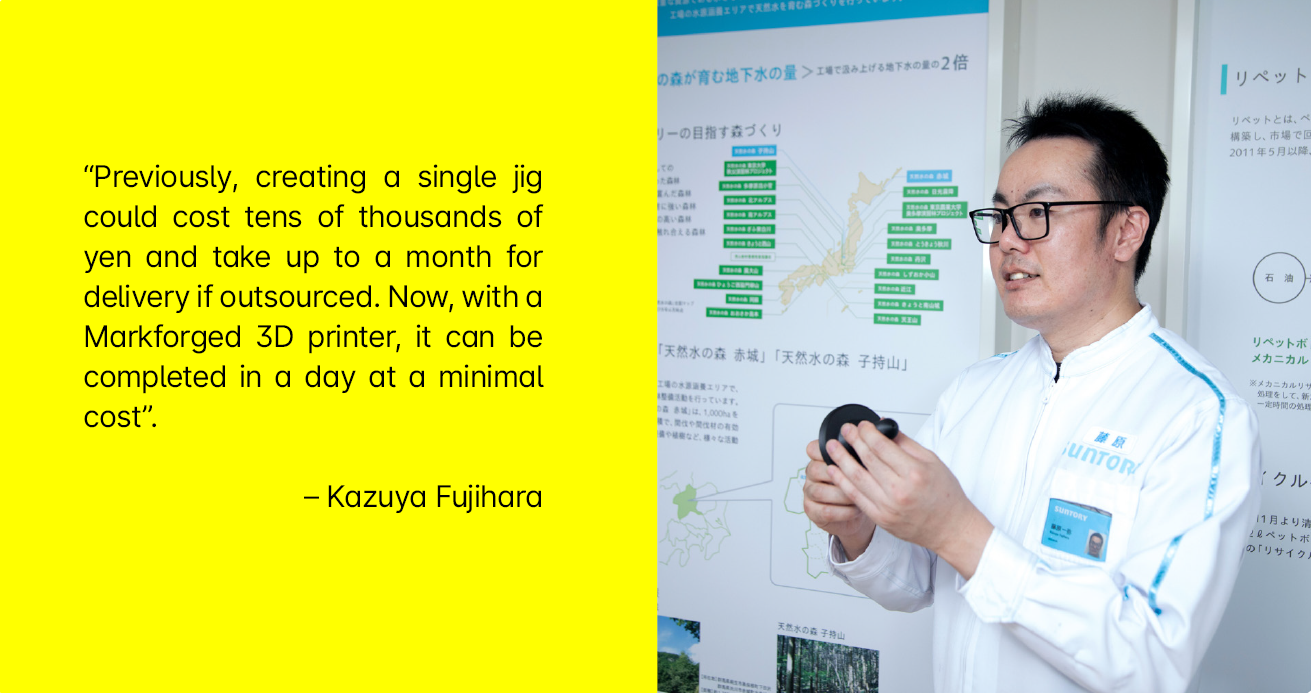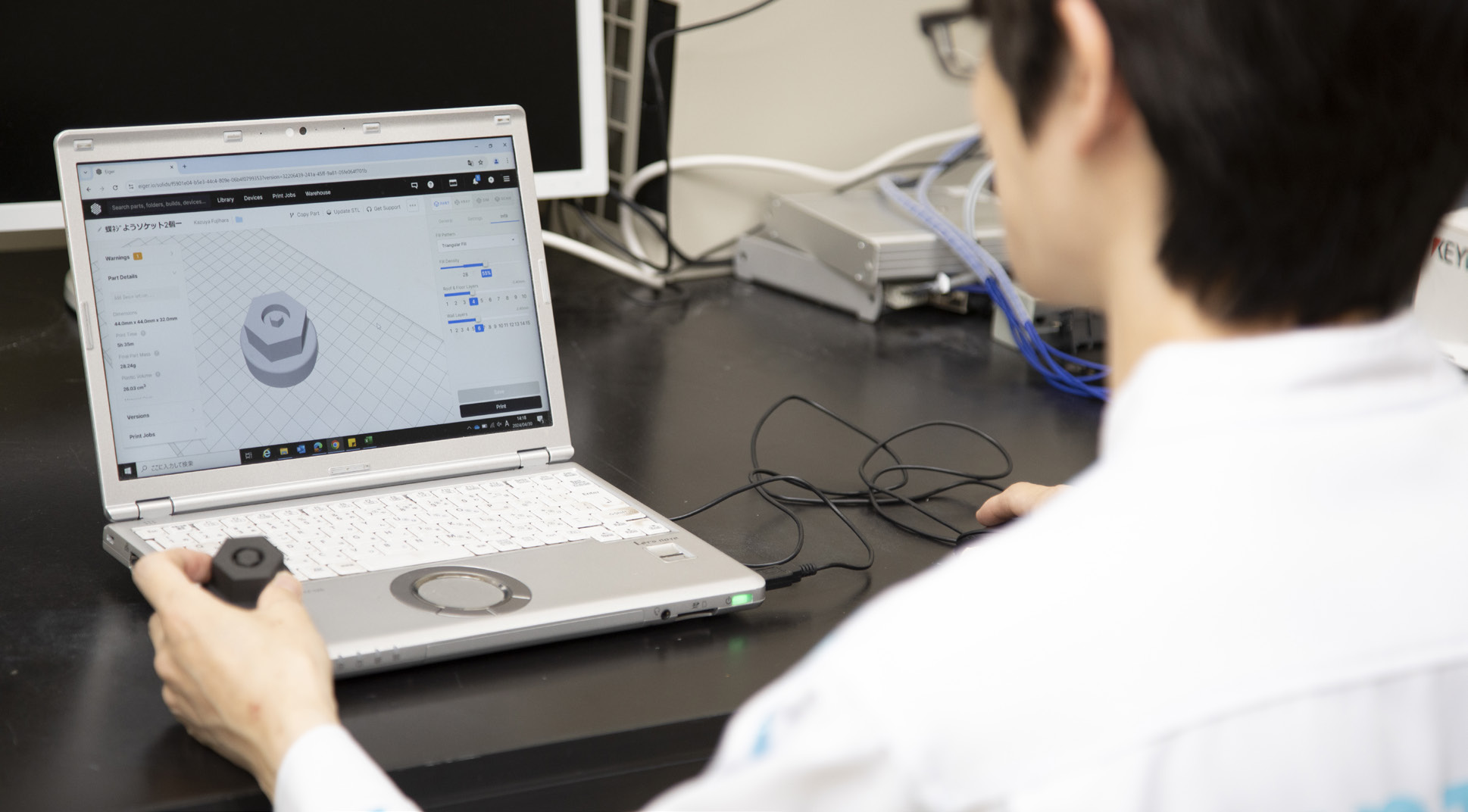Suntory : 3D Printing End-Use Jigs and Fixtures
Suntory Products Limited is a leading global company specializing in the production of premium non-alcoholic beverages. Suntory Products Limited is a wholly owned subsidiary of Suntory Foods International, and its Haruna plant is the Suntory Group’s main plant, one of the largest in eastern Japan. This plant is where Markforged 3D printers first played a vital role in production.
The Challenge
Suntory’s soft drink lineup meets diverse consumer demands with a variety of PET bottle shapes, each tailored to the product concept and featuring complex designs including embossed details. While the Haruna plant has advanced automation and labor-saving systems, product switchovers and maintenance are still performed manually. Engineers at all levels strive for efficiency, employing creativity and ingenuity in their work.
Production engineers use 3D CAD to create jigs that aid their daily tasks. However, outsourcing their production would be costly and time-consuming, and designs would be limited by the external manufacturer’s capabilities.
The Solution
In the face of these challenges, Suntory introduced Markforged 3D printers, known for their ability to produce precise, high-strength parts incorporating carbon fiber, to the Haruna plant. Kazuya Fujihara, a production engineer in the packaging process, was involved in evaluating the technology. “We tested a very complex design initially,” he noted, “and the final product was excellent, closely matching the CAD data dimensions. The material is as strong as metal, with added toughness, making it ideal for various applications like jigs and covers.”
Mr. Fujihara praised the printer’s ease of use. The Eiger™️ 3D printing software is user-friendly, eliminating the need for temperature adjustments or nozzle size settings when changing materials, and quickly generates slice data from 3D designs, minimizing errors. “The decision was made because anyone on the shop floor can operate it. Otherwise, it would remain unused,” he added.
Mark Two and Onyx One printers have been operational full-time at the Haruna plant since their introduction. The Mark Two has logged over 8,000 hours, producing nearly 900 parts, while the Onyx One has over 4,000 hours and has created more than 240 parts.
Young engineers are particularly proactive, using 3D CAD and Markforged printers daily to create helpful tools and drive continuous improvement. “We’re uncovering numerous improvement opportunities that had previously been overlooked, allowing us to quickly turn new ideas into reality,” he emphasized.

For instance, Takahiro Fujimoto, a production engineer, frequently helps change up to 300 tubes at once. “The task used to take three days and was physically exhausting,” he noted. “Now, thanks to a newly developed jig, we complete it in two days, and it’s much less taxing on our hands.”
The successful implement ation at the Haruna plant has led to the expansion of Markforged 3D printers across Suntory Products and the entire Suntory Group. To date, the group has introduced 14 printers, enhancing productivity and innovation at multiple sites.
The Future
Looking ahead, Mr. Fujihara highlighted that the Haruna plant focuses on modeling individual parts with 3D CAD. Plans are underway to expand into assembly modeling for developing attachments for machinery and robots. Additionally, there’s an initiative to consolidate and share jig design data across the Suntory Group, fostering innovation and continual improvement. “We aim to share successful designs and inspire new, creative solutions,” Mr. Fujihara concluded, expressing his commitment to leveraging Markforged’s 3D printers for future enhancements.
We’re uncovering numerous improvement opportunities that had previously been overlooked, allowing us to quickly turn new ideas into reality.”




